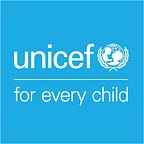Making the invisible visible
Ending violence against children
Children are affected by violence in every country and at all levels of society. But it is often an invisible problem, occurring behind closed doors, or shrouded in silence born of social tolerance, stigma or taboo. UNICEF calls for global support in making the invisible visible, in filling silences with voices to end childhood violence.
The covertness of violence makes its scale difficult to quantify, but evidence is sufficient to show that occurrence is unacceptably high and widespread. (Foreground) Sasha, 5, was witness to his mother’s murder in Ukraine.
The effects are far-reaching, compromising children’s physical and mental health as well as the achievement of their full adult potential. A boy, 11, was beaten by his family before being forced to leave home in Liberia.
Violence also undermines children’s fundamental rights to survival, development and protection. Abused by her parents, Janet, 4, was rescued from the streets of Bolivia.
Angel [NAME CHANGED], 16, from the Philippines, attempted suicide after an employer physically and sexually abused her. She now lives in a local shelter and has pressed charges against her abuser.
To eradicate sexual violence, gender inequities — often deeply entrenched — must be redressed. Survivors of gender-based violence shelter at a UNICEF-supported centre in Somalia.
Comprehensive data are more than a decade old: In 2002, approximately 150 million girls under age 18 experienced sexual violence and exploitation. A safe house in Liberia for sexual violence survivors.
And though fewer, some 73 million boys were also affected . (Left) Kamran [NAME CHANGED], 11, has been forced into sex work in Pakistan.
But communities can help reverse these trends. Eveny [NAME CHANGED], 14, was raped and frightened into silence, but neighbours alerted her parents, who accompanied her to the police. She now receives therapy in Guatemala.
Gangs imperil children with violence and threaten to lure boys in particular into becoming perpetrators of it . A youth from a local gang passes boys in Port-au-Prince, Haiti.
For every young person killed by armed violence, 20 to 40 more sustain injuries requiring hospital treatment. A 16-year-old, who lives and works on the streets in Côte d’Ivoire, remains scarred from a knife attack by another boy.
Long after physical wounds heal, psychological ones remain. A UNICEF-assisted centre in Kenya offers psychosocial support — critical to recovery and breaking the cycles of violence that are often generationally perpetuated.
Community violence threatens children’s ability to thrive in what should be safe spaces, including schools. A child affected by the three-day siege of School No. 1 in Beslan, the Russian Federation, participates in art therapy.
But schools can also expose children to violence originating from within — including corporal or humiliating psychological punishment, fighting or bullying. At school in Colombia, a boy (centre) was bullied into giving away a toy.
Neither are children immune to the grave violations armed conflict causes — among them injury, death and the destruction of infrastructure. Shadi [NAME CHANGED], 9, survived an explosion while fleeing the ongoing war in Syria.
Many also face risk of recruitment into armed groups or forces. Omar [NAME CHANGED], 10, undergoes rehabilitation at a UNICEF-assisted centre for recently released former child soldiers in the Central African Republic.
No child deserves to be abused. Formerly abducted and held by a rebel group in Uganda, a young woman works to finish her studies, her 10-month-old baby close by.
Though violence is everywhere, it is not inevitable. And each of us — by speaking out — has a role to play in ending it. Michel [NAME CHANGED], 3, who was nearly trafficked out of Haiti, waits as authorities search for his parents.
Originally published on www.unicef.org/photography in July 2013.
